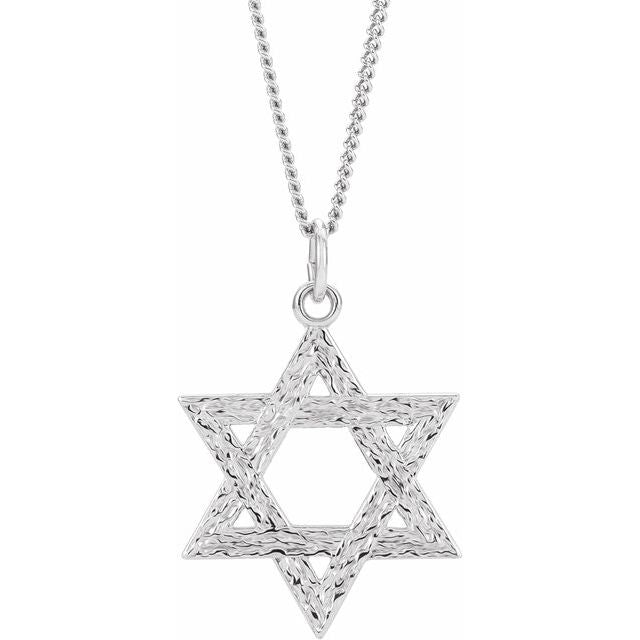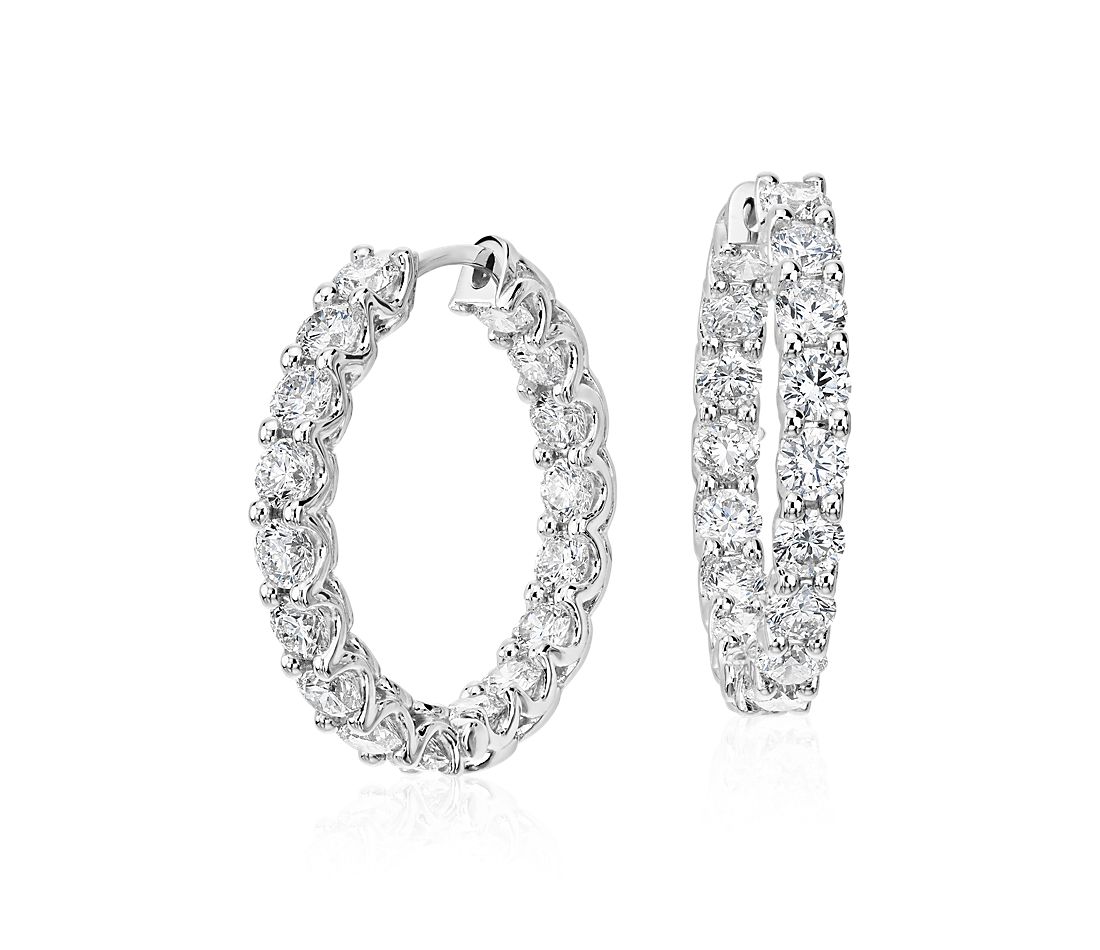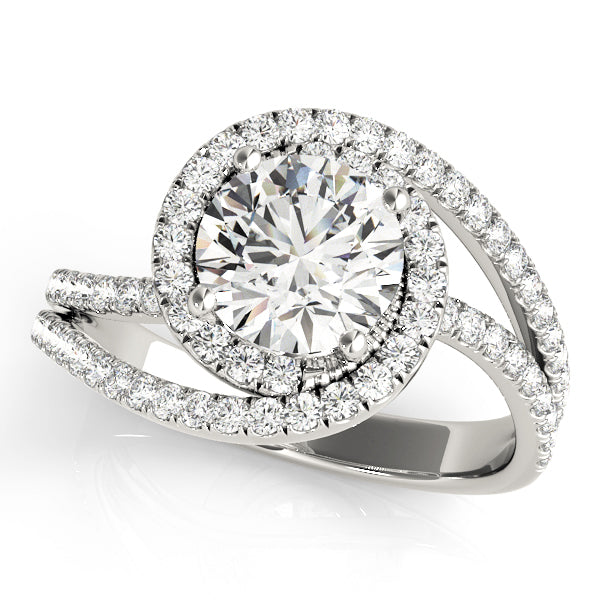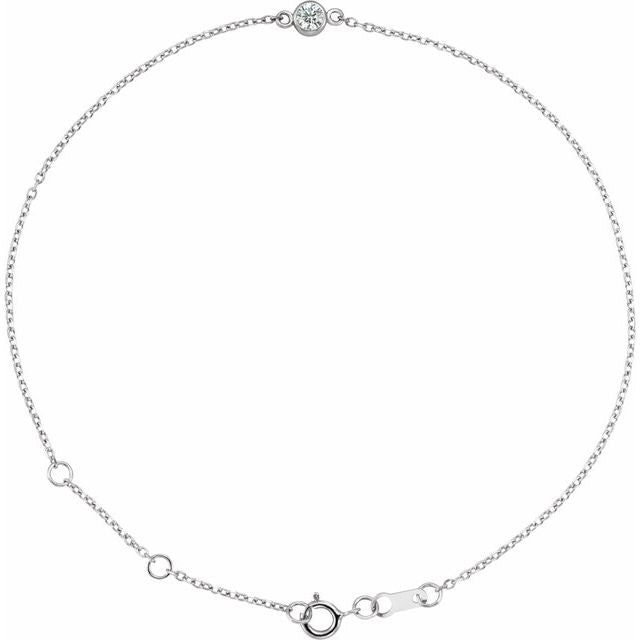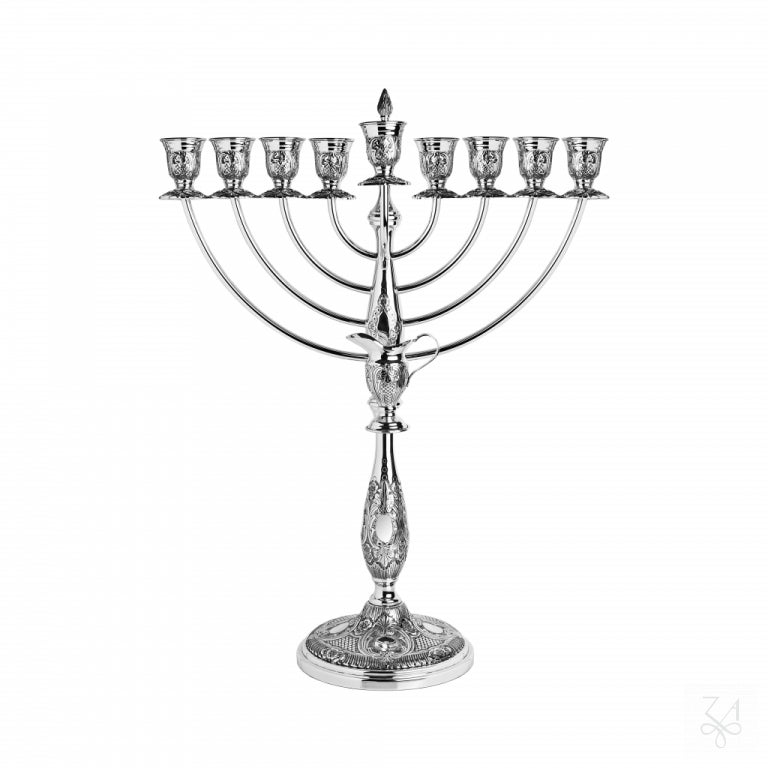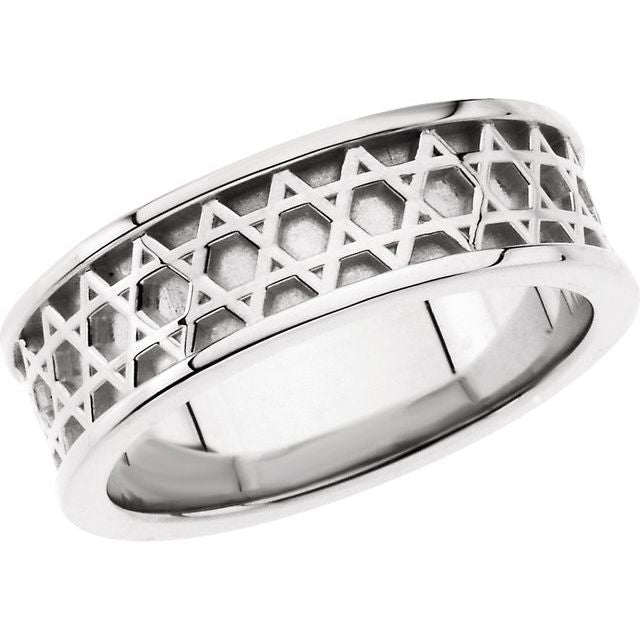
In a world where mass production dominates most industries, jewelry stands at an interesting crossroads. Walk into any mall, and you'll find stores filled with gleaming, perfectly uniform pieces produced by machines. Yet, venture into a local artisan market or browse through online platforms like Etsy, and you'll discover unique, handcrafted treasures that tell a different story. The debate between handmade and machine-made jewelry isn't just about aesthetics—it encompasses questions of value, sustainability, craftsmanship, and personal expression.
Whether you're shopping for an engagement ring, a special gift, or simply treating yourself to something shiny, understanding the differences between handmade and machine-made jewelry can help you make choices that align with your values, budget, and style preferences. As someone who has long been fascinated by the art of jewelry making, I've watched this landscape evolve dramatically over the years, with technology transforming production methods while artisans continue to preserve ancient techniques.
In this article, we'll explore the fascinating world of jewelry production, examining the pros and cons of both handmade and machine-made pieces. We'll delve into the processes behind each, the environmental and ethical considerations, pricing factors, and how to make the best choice for your specific needs. So whether you're a jewelry enthusiast or simply curious about what goes into that necklace or ring you're eyeing, let's embark on this sparkling journey together.
What Exactly Is Handmade Jewelry?
Before diving into comparisons, let's clarify what we mean by "handmade" jewelry. True handmade jewelry is crafted primarily using manual tools and techniques, with the artisan physically involved in most aspects of the creation process. This doesn't mean modern tools aren't used at all—many contemporary jewelers use torch soldering rather than forge fires, for instance—but the human touch remains central to the process.
Handmade jewelry typically begins with raw materials: sheets of metal, wire, gemstones, beads, or other components. The artisan then transforms these materials through techniques like soldering, wire wrapping, metal forming, stone setting, and polishing. Each piece evolves through the maker's hands, often taking hours or even days to complete.
Interestingly, the definition of "handmade" can vary. Some pieces marketed as handmade may involve some machine assistance for certain steps, while others are created entirely by hand from start to finish. This spectrum of "handmadeness" is worth keeping in mind as we explore the topic further.
The Machine-Made Jewelry Landscape
On the other side of the jewelry world, we have machine-made pieces. These are produced using industrial equipment like casting machines, 3D printers, laser cutters, and automated polishing systems. The production process typically begins with a prototype, which is then replicated dozens, hundreds, or even thousands of times.
Modern jewelry manufacturing has become incredibly sophisticated. Computer-aided design (CAD) allows for precise digital modeling before a piece is ever physically created. Lost-wax casting enables the mass production of complex designs. Laser cutting achieves details that would be challenging even for skilled hands. And automated polishing ensures a consistent finish across every piece.
Machine-made doesn't necessarily mean low quality—some of the most prestigious jewelry houses use machine production for certain aspects of their pieces. The key distinction is the scale and standardization of production, with minimal variation between identical items.

The Artistry and Uniqueness of Handmade Jewelry
One of the most compelling arguments for handmade jewelry is the undeniable human element it contains. Each piece carries the energy and intention of its maker—tiny variations that aren't flaws but rather signatures of human creation. When you wear a handmade piece, you're wearing something that exists nowhere else in exactly the same form.
This uniqueness extends beyond just appearance. Handmade jewelry often tells a story—of traditional techniques passed down through generations, of cultural significance embedded in designs, or simply of an artist's personal journey and aesthetic vision. Many artisan jewelers draw inspiration from nature, history, or their cultural heritage, creating pieces that feel more like wearable art than mere accessories.
The customization potential of handmade jewelry is another significant advantage. When working directly with an artisan, you can often request specific modifications to existing designs or collaborate on entirely custom pieces. Want your grandmother's sapphire incorporated into a new ring design? Prefer a slightly longer chain or a different clasp mechanism? These adjustments are typically much easier to accommodate with handmade pieces.
For many jewelry enthusiasts, the connection to the maker is part of the appeal. Knowing who created your jewelry—perhaps even meeting them or watching them work—adds a layer of meaning that machine-made pieces simply cannot offer. This human connection transforms jewelry from a commodity into something with personal significance.

Precision and Consistency in Machine-Made Jewelry
While handmade jewelry celebrates uniqueness, machine-made jewelry excels in precision and consistency. Modern manufacturing technology can achieve incredibly detailed work with perfect symmetry and exact measurements. This precision is particularly valuable for certain types of jewelry, such as engagement rings where stone security is paramount, or intricate pavé settings where dozens of tiny stones must be perfectly aligned.
The consistency of machine production also means that what you see is exactly what you get. If you're purchasing jewelry online and see a photo of a machine-made piece, you can be confident that your item will look identical. This predictability can be reassuring, especially for significant purchases or when buying gifts.
Machine production also allows for designs that might be extremely difficult or time-consuming to create by hand. Complex geometric patterns, perfectly uniform textures, or incredibly delicate structures can sometimes be better achieved through technological means. Some contemporary jewelry designs actually embrace the capabilities of machines, creating pieces that showcase what technology can accomplish rather than trying to mimic handmade aesthetics.
For jewelry that needs to meet specific technical standards—like the precise dimensions required for certain watch components or medical-grade body jewelry—machine manufacturing offers important advantages in terms of reliability and consistency.
The Price Factor: Understanding the Cost Differences
Perhaps the most obvious difference between handmade and machine-made jewelry is the price point. Handmade pieces typically cost significantly more than their mass-produced counterparts, which can make them seem like luxury items reserved for special occasions or substantial budgets.
This price difference reflects several factors. First, there's the time investment—a single handmade ring might take days to complete, while machines can produce dozens in the same timeframe. Then there's the skill factor—artisan jewelers spend years developing their craft, and their expertise is reflected in their pricing. Additionally, many handmade jewelers work with higher quality materials, ethically sourced gemstones, or recycled metals, all of which increase costs.
Machine-made jewelry benefits from economies of scale. Fixed costs like design work and mold creation are spread across hundreds or thousands of pieces, dramatically reducing the per-item expense. Larger operations can also purchase materials in bulk at lower prices and optimize their production processes for efficiency.
However, it's worth noting that price doesn't always directly correlate with quality. Some mass-produced jewelry from reputable companies may be better constructed than amateur handmade pieces. Conversely, some supposedly "luxury" machine-made brands charge premium prices without delivering proportionate quality. The key is understanding what you're paying for—whether it's materials, craftsmanship, design originality, brand prestige, or some combination of these factors.
Durability and Longevity Considerations
When investing in jewelry, particularly pieces you hope to wear regularly or pass down as heirlooms, durability becomes an important consideration. Both handmade and machine-made jewelry can be durable, but there are some differences worth noting.
Well-crafted handmade jewelry often features stronger structural elements like thicker prongs for stone settings or reinforced connection points. Artisans can pay special attention to potential weak spots and adjust their techniques accordingly. Additionally, handmade pieces can typically be repaired more easily by the original maker or another skilled jeweler, as they understand the construction methods used.
Machine-made jewelry, particularly from reputable manufacturers, benefits from engineering precision and quality control testing. These pieces are often designed with durability in mind, with computer modeling helping to identify and address potential structural weaknesses before production begins. However, some mass-produced jewelry (especially at lower price points) may use thinner materials or cut corners on construction to reduce costs.
One advantage of handmade jewelry is the personal relationship many buyers develop with their jewelers. If a handmade piece needs repair or adjustment years later, you may be able to return to the original maker, who will understand exactly how the piece was constructed. With mass-produced jewelry, repairs typically go through generic jewelry repair services, which may not have information about the specific manufacturing methods used.
Environmental and Ethical Implications
Jewelry production, like any manufacturing process, has environmental and ethical dimensions that increasingly matter to conscious consumers. Both handmade and machine-made jewelry have their own considerations in this realm.
Handmade jewelry often has a smaller carbon footprint simply due to scale. Small studios typically use less energy than large factories and produce less waste. Many artisan jewelers are also committed to sustainable practices, using recycled metals, ethically sourced gemstones, and non-toxic production methods. The localized nature of handmade jewelry production also means fewer transportation emissions compared to global supply chains.
That said, some traditional jewelry-making techniques can involve toxic chemicals or high energy use. Not all artisans prioritize sustainability, and without industry regulation, claims about eco-friendly practices can be difficult to verify.
Machine-made jewelry's environmental impact largely depends on the company's commitment to responsible practices. Large-scale production can be resource-intensive and generate significant waste, but some companies invest in efficient technologies, recycling programs, and renewable energy. The standardized nature of machine production can sometimes lead to less material waste per piece, as processes are optimized for efficiency.
The ethical considerations extend to labor practices as well. Handmade jewelry typically provides fair wages to skilled artisans, often in local communities. Machine-made jewelry's labor implications vary widely—from companies with excellent working conditions and fair compensation to those with problematic labor practices, particularly in some overseas manufacturing facilities.
For consumers concerned about these issues, transparency becomes crucial. Many handmade jewelers willingly share information about their materials and processes. Some machine-made jewelry companies have also embraced transparency, publishing details about their supply chains and sustainability initiatives. Looking for certifications like Fairmined gold, Kimberley Process diamonds, or B Corp status can help identify companies committed to ethical practices.
The Personal Expression Factor
Jewelry is inherently personal—it adorns our bodies, marks significant life moments, and often carries emotional meaning. Both handmade and machine-made jewelry can be vehicles for personal expression, but they offer different avenues for doing so.
Handmade jewelry often appeals to those seeking individuality. Wearing a piece that isn't mass-produced can feel like a statement about valuing uniqueness and supporting creative expression. Many handmade collections reflect specific cultural traditions or artistic movements, allowing wearers to connect with particular aesthetic histories or communities.
The story behind handmade jewelry can also become part of the wearer's own narrative. A necklace purchased directly from an artisan during travels, a ring commissioned to commemorate a special occasion, or earrings made by a friend all carry stories that become intertwined with the wearer's life experiences.
Machine-made jewelry offers its own form of personal expression, often through greater accessibility to diverse styles. The lower price points of mass-produced pieces allow people to build varied collections that can be changed to suit different moods, outfits, or occasions. This accessibility democratizes jewelry as a form of self-expression, making it available to wider audiences.
Brand identity also plays a role in the personal expression aspect of machine-made jewelry. Wearing pieces from recognizable brands can communicate membership in certain social groups or alignment with particular values and aesthetics. Some jewelry brands have built strong identities around specific causes or cultural movements, allowing wearers to signal their affiliations through their accessories.
Making the Right Choice for Your Needs
With all these factors in mind, how do you decide whether handmade or machine-made jewelry is right for a particular purchase? There's no universal answer—the best choice depends on your specific priorities, the purpose of the piece, and your personal circumstances.
Consider the occasion and intended use of the jewelry. For everyday pieces that might face rough handling or frequent wear, the consistency and often lower price point of machine-made jewelry might be practical. For special occasions, significant milestones, or investment pieces, the uniqueness and artistry of handmade jewelry could be worth the premium.
Your budget naturally plays a major role. If you're working with limited funds but want something special, consider smaller handmade pieces or those made with less expensive materials. Alternatively, look for machine-made jewelry from companies that prioritize quality and ethical practices within their price range.
Think about what aspects of jewelry matter most to you personally. If supporting individual artists, having a unique piece, or knowing the exact origins of your jewelry is important, handmade may be worth the investment. If precision, consistency, or having access to the latest trends at affordable prices matters more, machine-made might better suit your needs.
Remember that this isn't an either/or proposition for your entire jewelry collection. Many jewelry enthusiasts mix handmade statement pieces with machine-made everyday items. You might choose machine-made for certain categories (like chains or basic hoops) and handmade for others (like pendants or rings).
How to Identify Quality in Both Categories
Whether you choose handmade or machine-made jewelry, assessing quality is essential to ensure you're getting value for your money. Here are some guidelines for evaluating pieces in both categories:
For handmade jewelry, examine the finishing details. Even unique, handcrafted pieces should show attention to smoothed edges, secure stone settings, and sturdy clasps or findings. Look for consistency in wire wrapping, even solder joints, and proper polishing. Ask about the materials used—quality handmade jewelry should come with transparency about metal content, gemstone treatments, and construction methods.
When evaluating machine-made jewelry, weight can be a good indicator of quality. Heavier pieces typically contain more precious metal rather than hollow construction or thin plating. Check for even plating with no discoloration, secure stone settings with properly aligned prongs, and smooth mechanical parts like clasps and hinges. Reputable manufacturers should provide clear information about materials, including the specific metal alloys used and any treatments applied to gemstones.
For both types, consider the reputation of the maker or brand. Research reviews, ask for recommendations, and don't hesitate to request information about warranties or repair policies. Quality jewelry, whether handmade or machine-made, should be backed by makers who stand behind their work.
The Future of Jewelry Making: Blurring the Lines
As we look to the future of jewelry making, the distinction between handmade and machine-made is becoming increasingly nuanced. Many contemporary jewelers embrace a hybrid approach, using technology for certain aspects of production while maintaining handcrafted elements for others.
3D printing, for example, has revolutionized the prototyping process for many independent jewelers. An artist might design a piece digitally, print a prototype, create a mold from that prototype, and then cast and finish the piece by hand. Is the resulting jewelry handmade or machine-made? The lines are blurring.
Similarly, some larger jewelry companies are incorporating more handwork into their production processes, recognizing consumer desire for craftsmanship and uniqueness. Limited production runs, hand-finishing of machine-cast pieces, and customization options are becoming more common in the commercial jewelry world.
This evolution suggests that the future may not be about choosing between handmade and machine-made, but rather understanding the specific combination of techniques used to create each piece and evaluating whether that approach delivers the qualities you value most.
Caring for Your Jewelry: Maintenance Considerations
Regardless of how your jewelry was made, proper care will extend its life and preserve its beauty. Both handmade and machine-made pieces require maintenance, though there may be slight differences in care approaches.
Handmade jewelry sometimes requires more careful handling due to its unique construction. Pieces with natural stones, organic materials, or specialized finishes may have specific care requirements. The advantage is that you can often consult directly with the maker about the best care methods for your specific piece.
Machine-made jewelry from reputable companies is typically designed with durability and standardized care in mind. These pieces may come with care instructions that apply across the entire product line. Commercial jewelry is often constructed to withstand common cleaning methods, though pieces with plating or certain gemstones will still have limitations.
For all fine jewelry, some general care principles apply: store pieces separately to prevent scratching, remove jewelry before swimming or using household chemicals, clean regularly with appropriate methods, and have valuable pieces professionally inspected periodically. Developing good jewelry care habits will protect your investment regardless of how it was manufactured.
Conclusion: Appreciating Both Art Forms
As we've explored throughout this article, both handmade and machine-made jewelry have their place in the modern jewelry landscape. Rather than viewing them as competitors in a hierarchy of value, we might better appreciate them as different approaches to the art of adornment, each with unique strengths and considerations.
Handmade jewelry celebrates human creativity, individual expression, and traditional craftsmanship. It connects us to ancient practices while evolving through contemporary artistic visions. The variations and "imperfections" in handmade pieces remind us of the beauty in human touch and the value of slowing down to create something with care.
Machine-made jewelry showcases technological innovation, precision engineering, and democratic access to beautiful designs. It has made jewelry more accessible to wider audiences and pushed the boundaries of what's possible in terms of consistency and detail. The standardization of machine production provides reliability and often affordability that serves important market needs.
The most fulfilling approach to jewelry collecting might be appreciating both traditions for what they offer. Understanding the processes, values, and considerations behind different types of jewelry enriches our experience as wearers and collectors. Whether you're drawn to the soulful uniqueness of handcrafted pieces or the precise perfection of machine-made designs, the jewelry you choose becomes part of your personal story and self-expression.
In the end, the best jewelry—regardless of how it's made—is the jewelry that brings you joy, serves its intended purpose in your life, and aligns with your personal values. By understanding the differences between handmade and machine-made options, you can make more informed choices and build a collection that truly reflects what matters to you.
References
-
Strauss, C. (2021). The environmental impact of jewelry production: A comparative analysis of artisanal and industrial methods. Journal of Sustainable Luxury, 15(2), 78-96. https://www.sustainablejewelry.org/research/environmental-impact
-
Martinez, J. & Wong, L. (2022). Consumer perceptions of value in handcrafted versus mass-produced jewelry. International Journal of Retail Studies, 34(3), 412-429. https://www.ijrs.com/articles/jewelry-value-perceptions
-
Goldsmith Guild of America. (2023). Standards and practices in contemporary jewelry making. https://www.goldsmithguild.org/standards
-
Patel, R. (2022). The integration of digital technologies in traditional jewelry crafts. Technology in Arts & Crafts Quarterly, 8(4), 203-218. https://www.techarts.edu/jewelry-digital-integration
-
Ethical Metalsmiths. (2023). Responsible sourcing guide for jewelry materials. https://www.ethicalmetalsmiths.org/sourcing-guide



